Atlas Copco Screw Modules: Parts and Maintenance to Optimize Your Compressed Air System
Table of Contents
- Introduction to Atlas Copco Screw Modules
- What are Screw Modules and Their Importance?
- Types of Atlas Copco Screw Modules
- Operating Principles
- Advantages and Benefits in Industrial Settings
- Preventive and Corrective Maintenance
- Essential Parts for Screw Modules
- Selection Criteria for Your Industrial Application
- Best Installation Practices
- Troubleshooting Common Problems
- Industrial Applications in the USA
- Frequently Asked Questions
Introduction to Atlas Copco Screw Modules
Atlas Copco screw modules, also known as airends or screw elements, represent the heart of screw compressors from this prestigious brand. These critical components are responsible for the effective generation of compressed air in industrial systems, establishing a standard of reliability and efficiency in the pneumatic sector across the United States.
At Pneumatig, we understand that the screw module is much more than a simple component: it's the element that largely determines the performance, energy efficiency, and service life of the entire compression system. As specialists in pneumatic components, we offer a complete range of original Atlas Copco units and parts, backed by our technical knowledge and experience in the American industrial sector.
What are Screw Modules and Their Importance?
The screw module, also called an airend or screw block, constitutes the functional core of an Atlas Copco screw compressor. This element is primarily composed of two helical rotors (a male rotor and a female rotor) that rotate in opposite directions within a sealed housing, creating a variable compression space that allows for continuous and efficient compressed air generation.
The importance of this component lies in several fundamental aspects:
- Energy efficiency: Represents up to 70% of the total energy consumption of the compressor.
- Air quality: Directly influences the purity of the generated compressed air.
- Operational reliability: Determines the stability of the compressed air supply.
- System lifespan: A screw element in optimal condition significantly extends the durability of the compressor.
- Operating costs: Directly impacts maintenance expenses and energy consumption.
In American industrial facilities, where operational continuity and energy efficiency are priorities, having high-quality and properly maintained Atlas Copco screw modules is essential to ensure the productivity and profitability of processes that depend on compressed air.
Types of Atlas Copco Screw Modules
Atlas Copco has developed different series of screw modules to adapt to various industrial needs. Understanding these types is fundamental for selecting the appropriate replacement part or correctly planning the maintenance of your system:
By Compressor Series
- Units for GA series: Designed for Atlas Copco GA compressors, offering exceptional performance in medium and high-demand industrial applications.
- Units for G series: Compatible with Atlas Copco G compressors, providing a balanced solution between efficiency and cost for general applications.
- Units for GX series: Used in Atlas Copco GX compressors, ideal for workshops and small industries with moderate compressed air needs.
By Compression Technology
- Asymmetric screw units: With optimized profiles to maximize energy efficiency.
- Oil-injected units: Use oil to seal, lubricate, and cool during the compression process.
- Units for VSD compressors: Specially designed for variable speed drive compressors, allowing precise performance adjustment according to demand.
By Capacity and Pressure
- Low-pressure units: Typically operate up to 100 PSI, ideal for general applications.
- Medium-pressure units: Function between 115 and 190 PSI, suitable for most industrial applications.
- High-pressure units: Designed to work above 190 PSI, used in specific applications requiring higher pressure.
Key Takeaways: Types of Screw Modules
- The choice of unit must exactly correspond to the compressor series (GA, G, GX).
- Technologies vary according to the application, from standard units to high-efficiency VSD solutions.
- Capacities and pressure ranges must be selected according to the specific requirements of your industrial installation.
Operating Principles
Understanding how an Atlas Copco screw module works is fundamental to appreciating its value and ensuring proper maintenance. The compression process develops through the following principles:
- Intake: Atmospheric air enters through the intake port and fills the spaces between the rotor lobes.
- Compression: As the rotors turn, the volume between them progressively decreases, increasing the pressure of the trapped air.
- Discharge: When the rotors reach the discharge port, the compressed air is released into the system.
In oil-injected screw units (the most common in industrial applications), the oil fulfills three critical functions:
- Sealing: Creates an airtight barrier between the rotors and the housing, preventing air leaks.
- Lubrication: Reduces friction between moving components, minimizing wear.
- Cooling: Absorbs heat generated during compression, maintaining appropriate operating temperatures.
The efficiency of this process depends on factors such as the precision in rotor manufacturing, bearing quality, seal condition, and adequate lubrication. Atlas Copco has perfected these elements over decades, incorporating technological advances such as optimized asymmetric profiles and high-resistance materials that maximize performance and durability.
It's important to note that Atlas Copco screw modules are designed to operate within specific parameters of temperature, pressure, and flow. Exceeding these limits or inadequate maintenance can seriously compromise their operation and service life.
Advantages and Benefits in Industrial Settings
Atlas Copco screw modules offer numerous benefits that make them the preferred choice for compressed air systems in the American industrial sector:
Superior Energy Efficiency
The optimized design of the screw profiles allows for efficiencies up to 30% higher than alternative technologies, which translates into significant savings in energy costs, especially relevant in the context of high electricity prices and sustainability initiatives across the United States.
Reliability and Extended Service Life
Manufactured with premium materials and precise tolerances, these units are designed to operate continuously for thousands of hours with minimal maintenance. In American industrial environments where operational continuity is critical, this reliability represents a fundamental value.
Quiet Operation
Compared to other compression technologies, screw units generate significantly lower noise levels, contributing to a healthier work environment and complying with strict U.S. regulations on noise pollution in workplaces, including OSHA standards.
Compressed Air Quality
The design of Atlas Copco screw modules minimizes compressed air contamination, a crucial aspect in industries such as food processing, pharmaceuticals, or electronics, sectors with a strong presence in the American industrial landscape and subject to FDA regulations.
Adaptability to Demand
Especially in versions for VSD compressors, these units allow for adjusting compressed air production to actual needs, avoiding energy waste associated with excessive generation or operational problems derived from insufficient supply.
Lower Total Cost of Ownership
Although the initial investment may be higher than other alternatives, complete lifecycle analysis demonstrates that Atlas Copco screw modules offer a lower total cost of ownership thanks to their energy efficiency, durability, and reduced maintenance needs.
Key Takeaways: Competitive Advantages
- Superior energy efficiency significantly reduces long-term operating costs.
- Exceptional reliability minimizes costly downtime in production environments.
- The lower total cost of ownership justifies the investment in Atlas Copco quality compared to initially cheaper alternatives.
Preventive and Corrective Maintenance
An adequate maintenance program is essential to maximize service life and preserve the efficiency of Atlas Copco screw modules. Based on our experience with industrial clients across the United States, we recommend the following practices:
Preventive Maintenance
- Regular oil analysis: Allows early detection of problems such as contamination, degradation, or wear of internal components. We recommend quarterly analysis in intensive applications.
- Scheduled oil changes: Strictly following the intervals recommended by Atlas Copco, generally between 2,000 and 8,000 hours depending on the type of oil and operating conditions.
- Inspection of seals and bearings: Periodic verification to detect signs of wear or leaks before they cause major failures.
- Temperature and pressure monitoring: Continuous monitoring to identify deviations from optimal operating parameters.
- Alignment check: Especially important after interventions or repairs to ensure the correct position of components.
Corrective Maintenance
When corrective intervention is required on the screw module, it is essential to:
- Use exclusively original Atlas Copco parts: Generic components may seem more economical initially, but they compromise the performance and durability of the system.
- Follow documented procedures: Interventions must be carried out strictly following the protocols established by the manufacturer.
- Controlled environment: Repairs should be performed in clean environments to avoid contamination of internal components.
- Subsequent calibration: After any major intervention, it is necessary to verify and calibrate operating parameters.
- Gradual testing: Startup after a repair should be progressive, carefully monitoring all parameters.
It's important to note that in critical industrial installations, each hour of downtime can mean significant losses. For this reason, many American companies choose to keep certain critical components of the screw module in stock or establish maintenance contracts with specialized providers like Pneumatig, which guarantee minimal response times.
Key Takeaways: Effective Maintenance
- Regular preventive maintenance significantly reduces the risk of unexpected failures.
- The exclusive use of original Atlas Copco parts ensures system integrity.
- Meticulous documentation of all interventions facilitates future diagnosis and optimizes maintenance.
Essential Parts for Screw Modules
To ensure continuous operation of Atlas Copco screw modules, it's essential to know the most critical replacement parts and maintain a strategic inventory of them. Based on our experience with American industrial clients, these are the components that most frequently require replacement:
Regular Wear Components
- Service kits: Sets that include filters, gaskets, and other periodic maintenance elements.
- Oil filters: Crucial for maintaining lubricant purity and protecting internal components.
- Separators: Elements that separate oil from compressed air, ensuring air quality.
- Seals and gaskets: Prevent leaks and maintain the integrity of the compression system.
- Specific oils: Specially formulated for the demands of Atlas Copco screw modules.
Less Frequent Replacement Components
- Bearings: Support the axial and radial loads of the rotors, with a typical service life of 20,000-40,000 hours under optimal conditions.
- Control valves: Regulate air and oil flow within the system.
- Temperature and pressure sensors: Monitor critical parameters and protect the system against adverse conditions.
- Thermostatic elements: Control oil temperature to maintain optimal operating conditions.
Complete Modules
- Screw modules (airen
- Screw modules (airend): The complete unit, recommended to have as a spare in critical installations where downtime has a high cost.
- Electric motors: Provide the motive force to the system.
- Control systems: Manage the automatic operation of the compressor.
At Pneumatig, we understand that each industrial installation has specific needs. Therefore, we offer personalized advice to determine which parts you should keep in stock based on factors such as the criticality of your application, the specific model of your Atlas Copco screw module, the operating regime, and your maintenance history.
Additionally, all our replacement parts comply with the original manufacturer specifications, thus ensuring maximum reliability and service life for your compressed air system.
Selection Criteria for Your Industrial Application
Choosing the right Atlas Copco screw module is a determining factor for the efficiency and reliability of the entire compressed air system. For American companies looking to optimize their installations, we recommend considering the following criteria:
Fundamental Technical Parameters
- Capacity (FAD): The free air delivery flow should be sized considering not only current demand but also possible future expansions. As a general rule, we recommend a margin of 15-20% above current needs.
- Working pressure: Should be selected based on the application with the highest pressure requirement, also considering losses in the distribution network.
- Energy efficiency: Evaluate the specific consumption (kW/cfm) and compare between different models to minimize long-term operating costs.
- Duty cycle: For applications with continuous 24/7 operation, it's advisable to opt for units with greater robustness and cooling capacity.
Operating Environment Considerations
- Ambient temperature: American climate conditions, with regions that can exceed 100°F in summer or drop below freezing in winter, require units with adequate cooling or heating capacity.
- Required air quality: Depending on the application (especially in industries like food processing or pharmaceuticals), it may be necessary to complement with additional compressed air treatment systems.
- Available space: The dimensions and configuration of the unit must adapt to the available space in the installation.
- Sound level: Especially relevant in urban environments or when the compressor is located near work areas, needing to comply with OSHA regulations on industrial noise.
Economic and Strategic Aspects
- Total cost of ownership (TCO): Analysis that includes not only the initial investment but also operating, maintenance, and energy costs throughout the equipment's service life.
- Parts availability: Essential to ensure quick supply of critical components to minimize downtime.
- Technical support: Evaluate the technical assistance network available in the United States to respond effectively to any incident.
- Scalability: Consider the possibility of future system expansions and compatibility with existing equipment.
At Pneumatig, we offer specialized advice to help you select the Atlas Copco screw module that best adapts to your specific needs, conducting personalized studies that consider all these factors to optimize your investment.
Key Takeaways: Optimal Selection
- Proper sizing should consider both current needs and future growth.
- The specific environmental conditions of each American region significantly influence selection.
- Total cost of ownership (TCO) analysis usually favors higher quality and efficiency equipment despite their higher initial investment.
Best Installation Practices
The correct installation of an Atlas Copco screw module is fundamental to ensure its optimal performance and extend its service life. Based on our experience with industrial installations across the United States, we recommend following these guidelines:
Location and Environment
- Adequate compressor room: Should be a clean, well-ventilated space with controlled temperature. In hot American climates, especially in states like Arizona, Texas, or Florida, ventilation is critical.
- Solid foundation: The base must be capable of supporting the equipment's weight and absorbing vibrations. For large units, a specific structural study may be necessary.
- Maintenance accessibility: Provide sufficient space around the unit to facilitate maintenance and inspection tasks.
- Protection against elements: Avoid direct exposure to dust, moisture, or chemical contaminants that could affect components.
Connections and Services
- Electrical installation: Properly size cables and protections according to equipment power, complying with the National Electrical Code (NEC) and local regulations.
- Ventilation ducts: Correctly design systems for fresh air intake and hot air evacuation, especially critical in indoor installations.
- Compressed air piping: Use appropriate materials and diameters to minimize pressure losses. We recommend systems like Atlas Copco's Airnet or alternatives of equivalent quality.
- Drainage systems: Properly install condensate drainage systems to prevent moisture accumulation.
Commissioning
- Prior verification: Check alignment, oil levels, and connections before first startup.
- Progressive startup: Begin operation gradually, monitoring all parameters (temperature, pressure, vibrations, electrical consumption).
- Initial adjustments: Correctly configure working pressures, load/unload cycles, and other operating parameters.
- Break-in period: During the first 50-100 hours, perform more frequent inspections to detect possible anomalies.
For complex or critical installations, we recommend having the assistance of specialized technicians who ensure the correct implementation of all these aspects. At Pneumatig, we can recommend qualified professionals in your area who will ensure optimal installation of your Atlas Copco screw module.
Troubleshooting Common Problems
Even with the best maintenance, screw modules may occasionally present problems. Identifying them early and applying the appropriate solutions is key to minimizing downtime and repair costs. These are the most frequent problems reported by our clients in the United States:
Loss of Efficiency
- Symptoms: Increased energy consumption, reduced air flow, more frequent load cycles.
- Possible causes:
- Clogged filters (air or oil)
- Saturated oil separator
- Internal leaks due to worn seals
- Oil degradation
- Solutions: Replacement of filter elements, inspection and replacement of worn seals, oil change with the type recommended by Atlas Copco.
Elevated Temperature
- Symptoms: Activation of thermal alarms, shutdowns due to overtemperature, darker oil than normal.
- Possible causes:
- Insufficient ventilation in the compressor room
- Radiator obstructed by dirt
- Low oil level
- Failure in the cooling system
- Excessive ambient temperature (common in summer in many American regions)
- Solutions: Radiator cleaning, improved ventilation, verification of oil level and condition, inspection of thermostat and thermostatic valves.
Abnormal Noises or Vibrations
- Symptoms: Changes in the usual sound pattern, unusual vibrations, metallic noises.
- Possible causes:
- Bearing wear
- Component misalignment
- Loose bolts
- Rotor damage
- Solutions: Inspection and replacement of bearings, alignment verification, adjustment of fastening elements, vibration analysis for precise diagnosis.
Excessive Oil Consumption
- Symptoms: Frequent need for replenishment, presence of oil in compressed air, premature filter saturation.
- Possible causes:
- Damaged or saturated oil separator
- Obstructed oil return line
- Deteriorated internal seals
- Defective minimum pressure valve
- Solutions: Separator replacement, cleaning or replacement of the return line, seal inspection, verification of the minimum pressure valve.
Startup or Shutdown Problems
- Symptoms: Difficulty starting, unexpected shutdowns, irregular cycles.
- Possible causes:
- Problems in the control system
- Defective sensors
- Blocked inlet valves
- Electrical problems
- Solutions: Control system review, sensor calibration or replacement, valve cleaning or replacement, verification of electrical connections.
At the first sign of any unusual symptom, we recommend contacting specialized technicians. Early diagnosis can prevent major damage and costly repairs. At Pneumatig, we can help you identify the problem and supply the original Atlas Copco parts needed to effectively resolve it.
Key Takeaways: Problem Resolution
- Most problems manifest with detectable symptoms before a complete failure.
- Precise diagnosis requires specific knowledge and, occasionally, specialized equipment.
- Rapid intervention at the first symptoms can prevent major damage and costly repairs.
Industrial Applications in the USA
Atlas Copco screw modules are widely used in various American industrial sectors, each with specific requirements. Understanding these applications can help you better contextualize the needs of your own system:
Food and Beverage Industry
A key sector in the American economy, especially in states like California, Wisconsin, and New York. Requires high-quality compressed air, often oil-free, for processes such as:
- Packaging and bottling
- Pneumatic product transport systems
- Container cleaning
- Operation of valves and actuators in production lines
In these applications, reliability and air quality are priorities, with screw modules commonly complemented by advanced filtration and drying systems to meet FDA requirements.
Automotive Sector
With important production centers in states like Michigan, Ohio, and Tennessee, this sector demands:
- Large volume of compressed air for pneumatic tools in assembly lines
- Pressure stability for automated systems
- Energy efficiency to reduce operating costs
- High availability to avoid costly production interruptions
The most common configurations include multiple units with centralized control systems to optimize energy consumption according to demand.
Pharmaceutical and Chemical Industry
With strong presence in states like New Jersey, Pennsylvania, and North Carolina, these industries require:
- Compressed air of maximum purity, often with certification for product contact
- Redundant systems to ensure operational continuity
- Precise control of parameters such as humidity and particle content
In these environments, it's common to find screw modules specifically designed for oil-free applications, complemented with high-efficiency air treatment systems to meet stringent regulatory requirements.
Metallurgical and Machining Industry
Distributed throughout the United States, with concentrations in the Rust Belt states, this sector uses compressed air for:
- Operation of high-power pneumatic tools
- Lifting and handling systems
- Cleaning and blowing processes
- Cutting and welding systems
These applications typically require high-capacity screw modules and elevated working pressures, with special attention to condensate removal to protect tools and metal parts.
Textile Industry
With tradition in states like North Carolina and South Carolina, uses compressed air for:
- Pneumatic looms
- Dyeing and finishing systems
- Material transport
- Process automation
In this sector, supply stability and the absence of contaminants in the compressed air are critical factors for the final product quality.
Each of these applications presents specific challenges that influence the selection, configuration, and maintenance of Atlas Copco screw modules. At Pneumatig, we have the experience to advise you on the most suitable solution for your specific industrial sector.

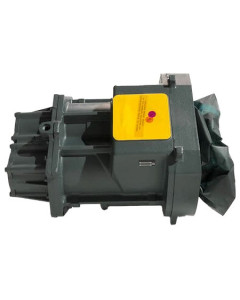
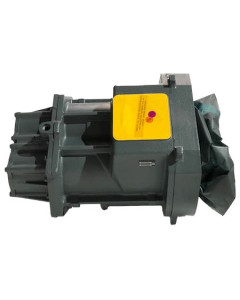
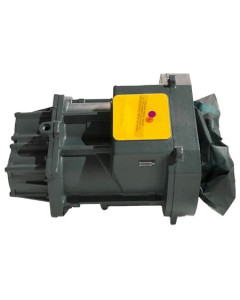
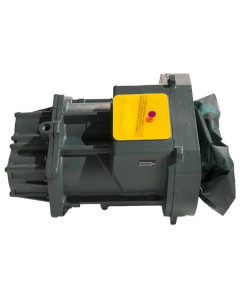
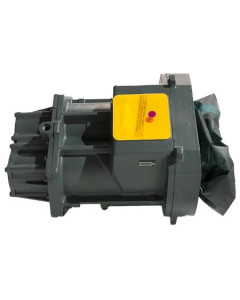
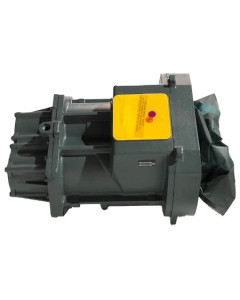
Login and Registration Form